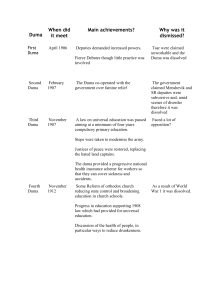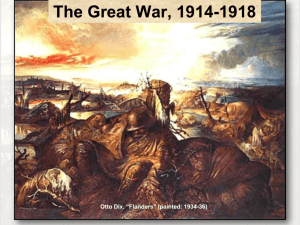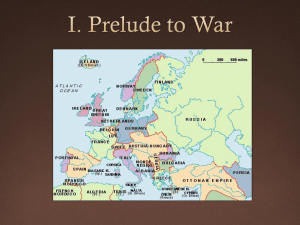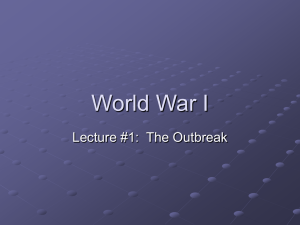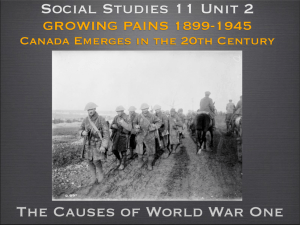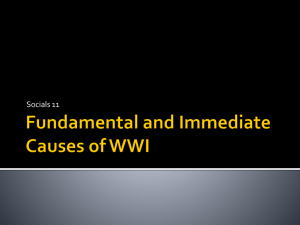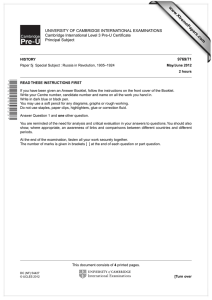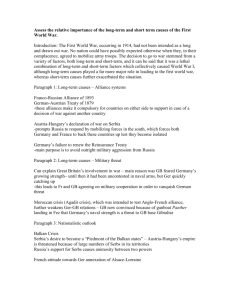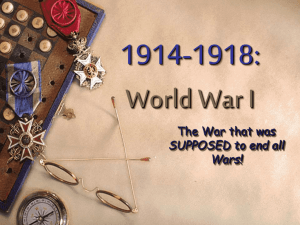Reaction and War, 1907-1917
advertisement
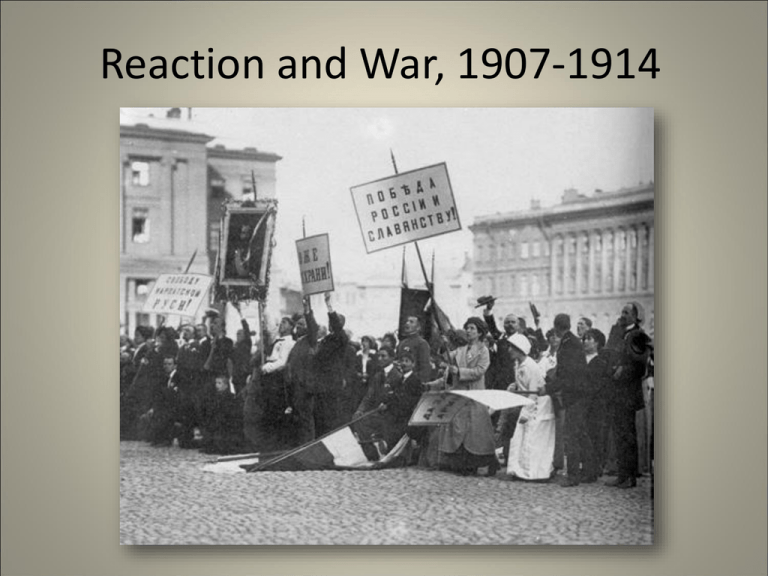
Reaction and War, 1907-1914 3 June 1907 “coup” • Not really a coup • Dissolved second calling of Duma. • Election law changed without Duma’s approval/consent • Misuse of Article 87 • Favored Tsar’s supporters • Deputy change from 2nd to 3rd Duma: – Nobility from 28% to 44% – peasants from 36% to 19% (1:800000 to 1:1,700,000) – Workers from 33 to 5 members – Number of clergy increased 4 times – 98% of 3rd Duma property owners – 77% Great Russian 3 June 1907 ‘coup’ Nicholas II’s diary: 3 June 1907, Sunday “The weather has turned wonderful. My mood has also become bright on the occasion of the dissolution of the Duma.” 4 June 1907, Monday “Another wonderful day... Spent the morning with Aliks... Glory to God! Already the second day after the dissolution of the Duma, [and] everywhere there is complete peace and quiet.” 3 June 1907 “coup” Third Duma party deputies: • Extreme right: 50 • Moderate right and nationalists: 97 • Octoberists: 154 • Progressivists: 28 • Kadets: 54 • Trudoviki: 13 • Social-Democrats: 19 • Muslim group: 8 • Lithuanian-Belarus: 7 • Polish group: 11 Mikhail Rodzyanko, Octoberist leader, 1859-1924 Stolypin reforms, 1906-1911 • Land reform: attack on commune (Grodno, not Saratov) • Goal: create small-holding farmers (conservative/patriotic) through consolidation • “wager on the strong and sober” • Encouraged agricultural improvement. • Peasant cooperatives • Resettlement to Siberia • Some success for a few: • By 1915: 30% of peasants had applied, 22% owned land • But widespread resistance Stolypin’s fall, 1911 • “Give the state 20 years of peace…, and you will not recognize Russia.” • “They [revolutionaries] need a great upheaval, we need a great Russia!” • Spring 1911: zemstvo reform bill to SW provinces • 1 Sept. 1911: shot at Kiev Opera house: “Happy to die for the tsar.” • Assassin: Dmitry Bogrov: anarchist/okhrana agent Lena Goldfield Massacre, 4/17 April 1912 • Pay started well, offered 100 rubles to start • Working conditions terrible • Food supply poor quality • 6000 struck • Police chief: “Certainly liquidate the strike committee!” • Committee arrested. • Workers marched. • Soldiers shot to kill: 150 killed, 250 injured. • 300,000 workers struck across empire. • Many lost all hope that the tsarist regime could be reformed. Then, war 1908: Austria-Hungary formally annexed Bosnia and Herzegovina 1912: First Balkan War, the Balkan League (Serbia, Greece, Montenegro and Bulgaria) took Macedonia from Ottoman Empire 1913: Second Balkan war, Bulgaria attacked Serbia, leading A-H to intervene Immediate catalysts 28 June 1914: Archduke Franz Ferdinand and wife Sophie assassinated Black Hand Gavrilo Princip Immediate catalysts (cont.) A-H decided to teach Serbia a lesson Franz Joseph asked Germany for support William II sent “Blank Check” (Austria could “rely on Germany’s full support.”) 23 July 1914: A-H presents ultimatum to Serbia Immediate catalysts (cont.) Nicholas: “As long as there remains the slightest hope of avoiding blood-letting, all my efforts will be directed to this goal. If, despite our most sincere desire, we do not obtain this, your majesty can be certain that Russia in no case will remain indifferent to the fate of Serbia.” 1914: Immediate catalysts (cont.) 28 July: A-H declared war on Serbia. 29 July: Tsar Nicholas II ordered partial mobilization against A-H Sergei Sazonov intervened. 30 July: Russia ordered full mobilization against A-H and Germany. 1 August: Germany declared war on Russia. 2 August: German General von Moltke demanded that Belgium permit German armies to march through it; Belgium refused. 4 August: Britain and France declared war on Germany. 2 August (20 July) 1914
